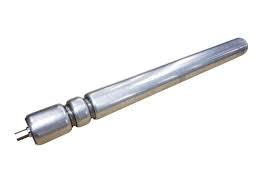Conveyor rollers are material handling equipment that are used in the manufacturing, agricultural, food and beverage, and logistics sectors for various purposes. From moving materials along a production line in manufacturing facilities to transporting packages from one location to another in warehouses, there are different types of conveyor rollers to meet various requirements. Conveyor rollers can be moved manually, by gravity, or by power and can also be customised to work with a range of auxiliary equipment such as bends, gates, and turntables.
Like any other machinery with moving components, conveyor rollers can be hazardous if not installed or operated properly. Also, one needs to conform to specified safety regulations to avoid dangerous situations.
Let us take a look at 4 safety tips for conveyor roller fit outs that should be followed to avoid dangerous situations
Never overload the conveyor roller
Never exceed the conveyor’s load capacity. Overloading can lead to goods spilling off the side of the belt. This could cause overheating, jams and malfunction, not to mention goods falling down and getting damaged.
Make sure that the safe operating capacity of your conveyor roller is made clear to the person operating the equipment.
Know the pinch points/nip points
Conveyor rollers have pinch points at certain positions. These points are formed where two or more rolling parts move towards each other or where one rolling part meets a stationary part. Pinch points can easily draw in loose clothing, loose cables and wires, tools, hair, hands or limbs, resulting in severe injuries or even death.
The nip points should be guarded to prevent accidental contact with foreign objects. It is also important to know where all the nip points are located, so that you can take extra care to avoid risks.
Workers should be authorised and properly trained
Only competent and authorized workers should be allowed to operate a conveyor roller. This includes starting, interrupting when necessary, accidental stoppage, emergency shutdown and normal shutdown of the machine. Workers should wear appropriate safety gear that includes clothes, gloves, hard hats, safety shoes, safety glasses and ear defenders, etc.
The workers should also know the proper loading procedures to prevent overload, and in the case of an emergency, know how to stop the conveyor, and know where the emergency buttons are located. Emergency cut-off stop switches should be placed near the operator and also located at specific distances along the conveyor roller. The emergency buttons should be highly visible and located in accessible locations. Similarly, warning labels to alert workers should be in place. They also need to keep up to date with the latest policies and safety procedures.
Maintenance of the conveyor roller
A conveyor roller that does not work properly can cause accidents and other serious problems. Regular maintenance of your conveyor controls needs to be done to make sure they work properly. The guards around the pinch points should be regularly checked to see whether they have not loosened.
Only trained personnel should be allowed to do the maintenance work.
Conveyor rollers can be customised to suit any conveyor application. Conveyor rollers are available in different sizes, diameters, wall thicknesses, seal types, bearing brands and materials. Take a look at our website to find a wide assortment of conveyor rollers to suit your needs.
